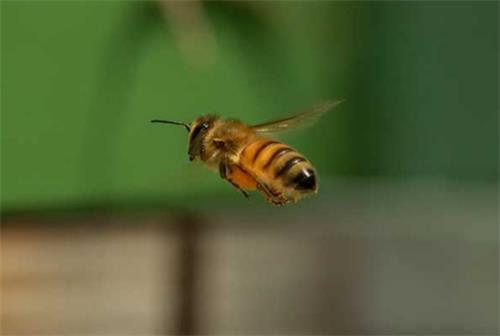
The mystery of bee flight has long puzzled scientists, particularly from an aerodynamic perspective, as their flying technique appears to contradict conventional physical principles. Given their body size and wing proportions, it would seem that bees should be incapable of sustained flight. Their relatively heavy bodies and small wingspan suggest that they should not be able to remain airborne. This question baffled scientists for years, as traditional flight theories could not fully explain how bees manage to fly. However, in 2005, with the aid of high-speed imaging technology and advanced wing mechanics models, researchers finally unraveled the secrets of bee flight.
Most insects generate lift through simple up-and-down wing movements, but bees employ a far more complex technique. Using high-speed cameras, scientists discovered that bees flap their wings at an astonishing frequency of up to 230 beats per second, much higher than many smaller insects. Further analysis revealed that bees utilize a unique short, choppy wingstroke pattern, enabling them to create intricate airflow dynamics that generate sufficient lift to keep their bodies suspended in the air.
This wingbeat pattern allows bees to produce powerful air currents in a very short time, propelling their bodies off the ground. However, scientists did not stop there; they conducted further experiments to understand how bees overcome the challenges of body weight and air density while flying.
In one particularly fascinating experiment, researchers placed bees inside a specially controlled chamber filled with a mixture of oxygen and helium—a gas combination with a lower density than normal air. In this low-density environment, if bees continued flapping their wings at their usual speed, they would struggle to maintain flight. To compensate, the bees instinctively increased their wingbeat frequency, allowing them to stay airborne despite the thinner atmosphere. By closely observing this adaptation, scientists were able to capture intricate details of bee wing movements under extreme conditions. This experiment not only shed light on how bees sustain flight in low-density air but also provided valuable insight into the precise mechanics of their wing motion.
These findings have profound implications for our understanding of bee flight mechanics and offer a deeper appreciation of these seemingly small creatures. Traditional aerodynamic models could not fully explain how bees manage to fly despite the limitations of their body weight and wing size. However, through new flight models and detailed analysis of their wing movements, scientists have demonstrated that bees overcome physical constraints using high-frequency wingbeats and specialized aerodynamic techniques, allowing them to maneuver freely in the air. This discovery not only solves a long-standing scientific mystery but also offers new perspectives for research in entomology and aerodynamics.
Unraveling the mystery of bee flight provides crucial insights into the movement strategies of some of nature’s smallest creatures. Bees achieve flight through remarkably efficient wingbeats, and this breakthrough study offers valuable inspiration for exploring similar phenomena in other species.

Asexual Reproduction
The Mystery of Shark Virgin Birth: Unveiling the Secrets of Asexual Reproduction
Sharks have long fascinated biologists due to their unique and complex reproductive methods. However, an extraordinary event in 2001 at the Henry Doorly Zoo in Nebraska, USA, sparked widespread interest in the scientific community.

Bicycle
This Bicycle Sells for $1 Million! How Do Technology and Luxury Merge on Two Wheels?
The House Of Solid Gold, an American company, has launched the world’s most expensive bicycle—named "Beverly Hills"—with a price tag of $1 million.

The Astronomical Code
Celestial Relics: The Astronomical Code on an Ancient Clay Tablet
2,150 years ago, in present-day Iraq, archaeologists uncovered a circular clay tablet at the ruins of Nineveh, the ancient capital of Assyria.


